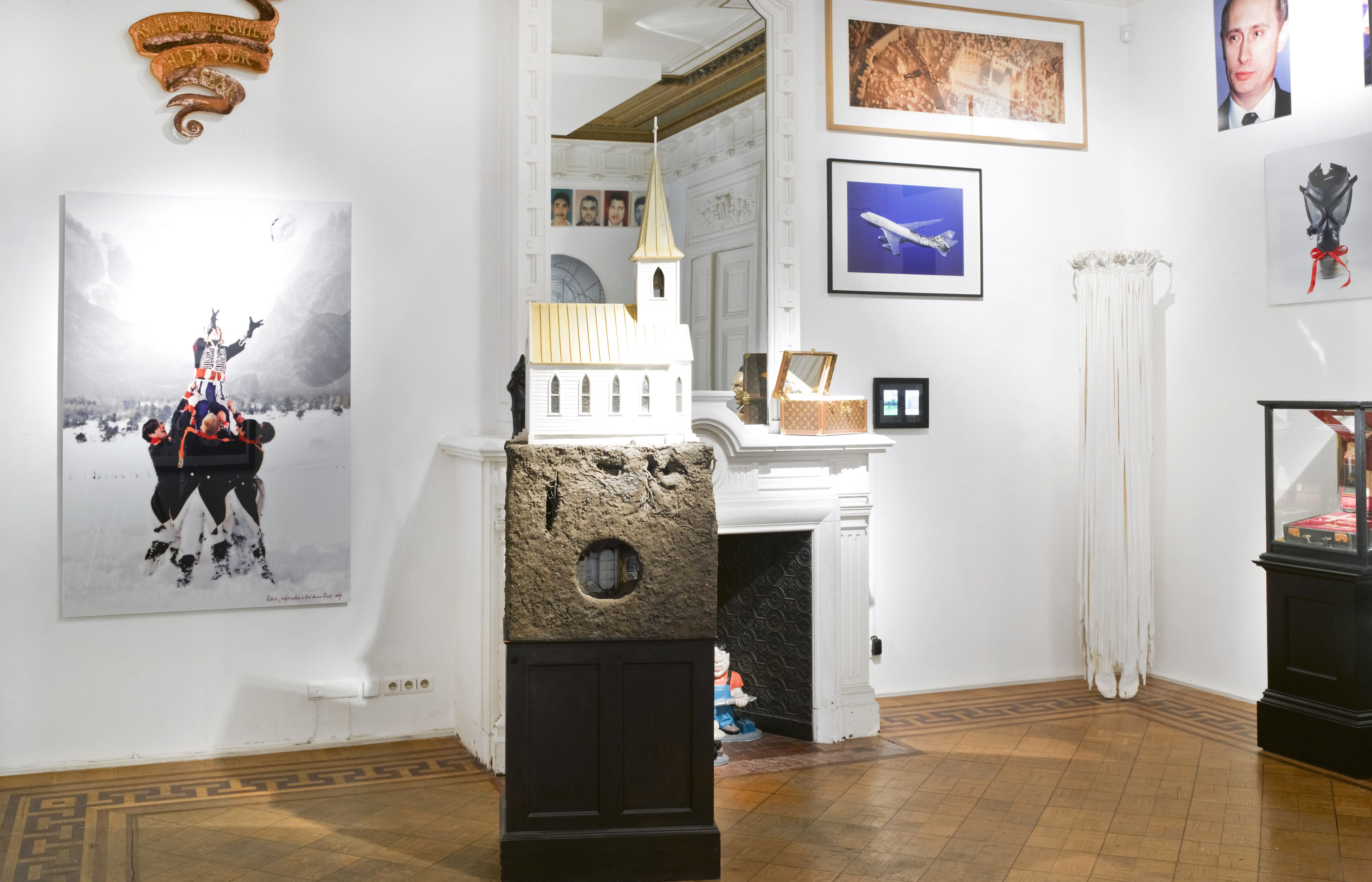
Full House: 100 Artists / 15 years of shows & inventory at AEROPLASTICS
4 April - 17 May 2014
Aeroplastics @ Rue Blanche str. Brussels
One house. Over a hundred artists. From painting and drawing and sculpture, to photography and video. A carpet. In every room, on every floor: Welcome to Aeroplastics' Full House!
The exhibition's aim is not to retrace the history of the gallery's last fifteen years of activity, but to offer a snapshot that reflects the spirit of the place. This is not a portrait which, for that matter, would be quite an endeavour to achieve. So whom to call on? In addition to the close collaborators who help define Aeroplastics' aesthetic, we must also count the very many of visual artists regularly invited for grand and festive exhibitions that explore the Comédie humaine in all its aspects: the transformation and limits of corporality, sex, individual and collective violence, the excesses of consumer society, socio-cultural stereotypes, conflict, the ecology, obsessions of all sort…
All these themes are resident in Full House, in addition to quite a few others. As one takes in the exhibition, a certain logic emerges around several of the large ensembles. On the first floor, garden side, in a room dominated by La liberté guidant le peuple (Liberty Guiding the People) in the guise of decorative object (Kurt Treeby), war and violence dominate: Ronald Ophuis' child soldiers, borders and barbwire from Charley Case, Gottfried Helnwein and his Adoration of Saint Führer, beauty case booby-trapped by Gregory Green, portraits of artisans from 11 September 2001, not to forget Paul M. Smith's unhinged hooligans. Christoph Draeger offers his vision (in the form of a puzzle) of the site of the "Mecca of contemporary art" at war's end: Documenta Zero (Kassel, 1945). As for the standard by Lizène, it reminds us - on the eve of elections said (once again) to be crucial - of the GMO which is Belgium today. Marking the transition, Robert Gligorov presents the goddess of war's fury as an object of great fragility. His Minerva, smashed like an egg on the floor, leads on to Cathy Coëz's installation, but this corridor between the two rooms also comprises a passage from the figurative to the abstract.
As for street side, the human figure has completely disappeared - a wink to the neo-conceptual current that currently dominates in gallery land, but also an affirmation of the variety of forms of expression championed by Aeroplastics. Man's imprint, on the other hand, is omnipresent, as we see in the science-fiction landscape of Ryuta Amae, or in the architectonic structures of Bodys Isek Kingelez and of Jean Katambayi Mukendi. Simone Decker produces strange nocturnal visions of suburban pavilions, and Carlos Aires offers us the bucolic image of a park known as a place of nocturnal rendez-vous for the gay community. Roger Wagner's impressive shooting stand leads on to Stephen Shanabrook's bandages and sharp blades… The meticulous library arrangement from André Stas dialogues with the geometry of Georges Meurant, while with Carrie Yamaoka all forms dissolve.
On the floor above, one room is devoted to the evocation of childhood, to nostalgia and memory - of the Aeroplastics variety, to be sure. Love Child, proclaims the neon by Delphine de Saxe-Cobourg ! The Special Friends (from the series "Saved Souls") from Mikel Glass, engenders an uneasy atmosphere just as does Ellen Kooi's image of toddlers lost in the undergrowth. Shadi Ghadirian and Ronald Ophuis (whose portraits are linked to sites such as Beslan and Gaza) remind us that it is the children who are often war's first victims. And Skip Arnold, stashed in a bush near a girls' school for the purpose of a performance, provides a good dose of humour to the mix.
After a small room consecrated to editions of multiples (Cindy Sherman, Douglas Gordon, Christian Boltanski, Jeremy Deller, Gilbert&George, etc), the visit continues with a theme held dear by the gallery: namely sex, and in all its incarnations. Gender and transgender are in the spotlight with patron figures like Del LaGrace Volcano and Annie Sprinkle, but the theme of eroticism and sex offers by definition an infinite variety of possibilities, as testified to in the œuvres of Terry Rodgers, David Kramer, Marcel Mariën and Chéri Samba. Till Rabus, with his Capotes dans WC publique, reminds us of the necessary precautions.
Don't follow the guide: the exhibition is everywhere and each work should also be appreciated for its singularity, beyond any thematic context. And for those who demand to know the why's and wherefores of all this, we recommend them to the sculpture by John Isaacs that greets the visitors, and who concentrates within her quite a number of elements proper to Aeroplastics' byword: If Not Now Then When ?
- PY Desaive





















